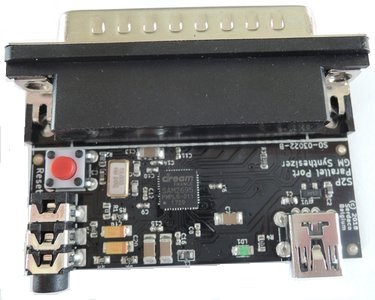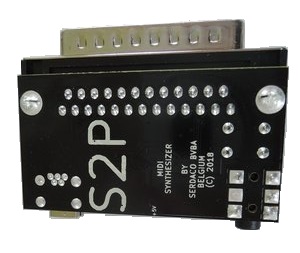Parallel Port Sound Cards
22nd October 2020As the title suggests, here I look at the various modern day options to add a sound card via your computer's parallel port. This is especially useful if you wish to play retro games on an older laptop or one whose built-in sound chip doesn't support DOS. For most desktop computers, you would simply slot in a sound card and your choices there are plenty.
But with laptop computers, until the Pentium era, and even a little beyond into 1994 and 1995, it was common to still have no sound offering built into your laptop unless you bought a PCMCIA sound card which also are very rare these days.
Covox Speech Thing / Disney Sound Source
Released in 1987, Covox Inc., produced the Speech Thing - a simple 8-bit DAC (Digital to Analog Converter) which converted digital audio signals into analog sound to be output to a speaker. You plugged it into your parallel port, so installation was quick and seamless. It was crude but was still a huge amount better than the built-in PC speaker. Mobygames lists 56 games that directly support the Speech Thing.
Disney also produced a clone of the Covox device which operated in much the same way, called the Disney Sound Source.
Unfortunately, both the Covox and Disney are very hard to come by these days. I assume most were thrown in the bin once more affordable and capable sound cards became available or owners upgraded their laptops to ones which came with built-in Sound Blaster support. But fret not, read on for some awesome brand new solutions available to purchase from Serdashop (user 'dreamblaster' on Vogons.org)..
CVX4
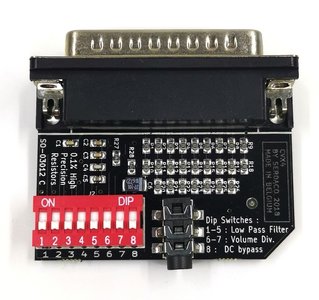 The CVX4, from Serdashop, is a modern-day equivalent of the Covox Speech Thing. In Serda's own words, it's a "Parallel port soundcard with high quality tuning options, compatible with Covox Speech Thing.
Line out connection, intended to connect to amplified speakers. No compromises, we wanted to make the best possible covox clone, and did not spare effort or expenses :
after building 3 prototype generations (CVX1, CVX2, CVX3), this is now the final version : CVX4 uses very high precision 0.1% all same value resistors, and a reverse engineered schematic (based on a real original Covox) for excellent 8 bit sound. Other DIY clones use 1% or 5% resistors, different schematic, ...you can compare... CVX4 sounds way better... Added low pass tuning options to simulate speaker effect to your own taste.".
The CVX4, from Serdashop, is a modern-day equivalent of the Covox Speech Thing. In Serda's own words, it's a "Parallel port soundcard with high quality tuning options, compatible with Covox Speech Thing.
Line out connection, intended to connect to amplified speakers. No compromises, we wanted to make the best possible covox clone, and did not spare effort or expenses :
after building 3 prototype generations (CVX1, CVX2, CVX3), this is now the final version : CVX4 uses very high precision 0.1% all same value resistors, and a reverse engineered schematic (based on a real original Covox) for excellent 8 bit sound. Other DIY clones use 1% or 5% resistors, different schematic, ...you can compare... CVX4 sounds way better... Added low pass tuning options to simulate speaker effect to your own taste.".
Available for a little over 20 EUR delivered, I have mine on order so watch this space for a full review when it arrives! **UPDATE* Read my full review here.
OPL2LPT
 For Ad Lib compatibility, Serda created the OPL2LPT in 2017. This is an OPL2 'Ad Lib' FM synthesis sound card for the parallel port, inspired by a much earlier project dating back to 2005 by raphnetlabs.
Available as a high quality solder kit, this OPL2LPT kit includes authentic legendary Yamaha OPL2 chips and includes a headphone amplifier.
For Ad Lib compatibility, Serda created the OPL2LPT in 2017. This is an OPL2 'Ad Lib' FM synthesis sound card for the parallel port, inspired by a much earlier project dating back to 2005 by raphnetlabs.
Available as a high quality solder kit, this OPL2LPT kit includes authentic legendary Yamaha OPL2 chips and includes a headphone amplifier.
It works with the help of a 1 KB software driver (TSR) written by Peter De Wachter (user "pdw" on Vogons.org) called Adlipt which intercepts commands that are sent by games to the Ad Lib port, 388h, and redirects them to the OPL2LPT instead. It can also trap the Sound Blaster FM I/O ports (220h for example). although this won't fool a lot of the setup utilities out there, but if you can force a game to run in Sound Blaster mode for music, this should work in providing the FM OPL2 sound output.
The TSR does require a 386 CPU and a memory manager, e.g. EMM386, but doesn't need expanded memory to run (just use the 'NOEMS' argument).
For some games, the TSR doesn't work. To get around that, or if you're using the device on an 8088/8086 or 80286 system, OPL2LPT comes with AdPatch - another utility to which you pass the filename of the game's executable or the Ad Lib driver filename. It then overwrites part of this file, thus patching it to work with the OPL2LPT. Because this changes the file itself, you don't need to then run a TSR to redirect audio output to the OPL2LPT, so there is no slowdown in-game, and you don't need a 386 CPU or EMM386 loaded (unless the game demands it). For a list of games that work by patching, click here.
It's been mentioned that when running Adlipt it does use up some CPU cycles, so expect games to run a little slower if your CPU/memory are barely up to the task for the game you are playing. I would advise to use this device on faster hardware and if you are playing a speed-sensitive title, use a software utility to slow it down such as Slowmo.
OPL2LPT is available from Serdashop for 35 EUR.
OPL3LPT
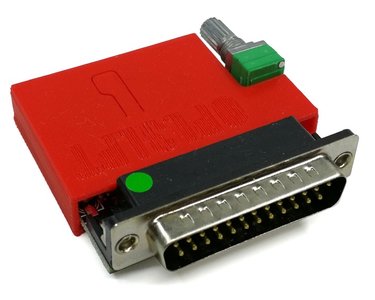 Fully backward-compatible with OPL2LPT, OPL3LPT uses the Yamaha YM262 chip coupled with a Yamaha YAC512 digital-to-analog converter, and features a stereo headphone amplifier.
Fully backward-compatible with OPL2LPT, OPL3LPT uses the Yamaha YM262 chip coupled with a Yamaha YAC512 digital-to-analog converter, and features a stereo headphone amplifier.
It works using the same Adlipt and AdPatch utilities as OPL2LPT, but adds an OPL3TEST tool to test the stereo capabilities of OPL3. This is the same as the OPL2TEST tool, but you can test left and right channels independently to ensure stereo output is working properly.
For more information, see OPL2LPT further up this page.
OPL3LPT is available from Serdashop.
Dreamblaster S2P
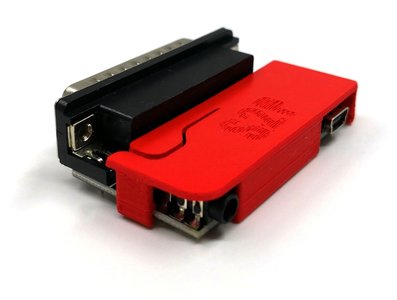 From Serdashop website: "General MIDI sound for your laptop at last ! You already have a DOS-compatible sound chip inside your old notebook which is Ad Lib- and Sound Blaster-compatible but you want more?
So the next step would be a wavetable daughterboard. But wait, there is no WaveBlaster header, not even a 15-pin Game/MIDI port… and here comes S2P in: Full general MIDI-compatible synthesizer for Your PC's parallel port. Prepare for the ultimate punch to your ears."
From Serdashop website: "General MIDI sound for your laptop at last ! You already have a DOS-compatible sound chip inside your old notebook which is Ad Lib- and Sound Blaster-compatible but you want more?
So the next step would be a wavetable daughterboard. But wait, there is no WaveBlaster header, not even a 15-pin Game/MIDI port… and here comes S2P in: Full general MIDI-compatible synthesizer for Your PC's parallel port. Prepare for the ultimate punch to your ears."
So the DreamBlaster S2P effectively gives you the ability to play games that support General MIDI as well as any MT-32 titles that work with SoftMPU. There's a special build of SoftMPU by Peter De Wachter for the S2P where you can specify your parallel port as the output. More details on this device when it arrives, and I will do a full review.
So these modern solutions are actually ideal for those who don't wish to emulate to play old DOS games, and perhaps don't have the desk space for an old beige desktop and CRT. Just get an old laptop, one of these (or all three!), and you have a similar setup to a desktop PC with its sound card and GM daughterboard. Nice!

